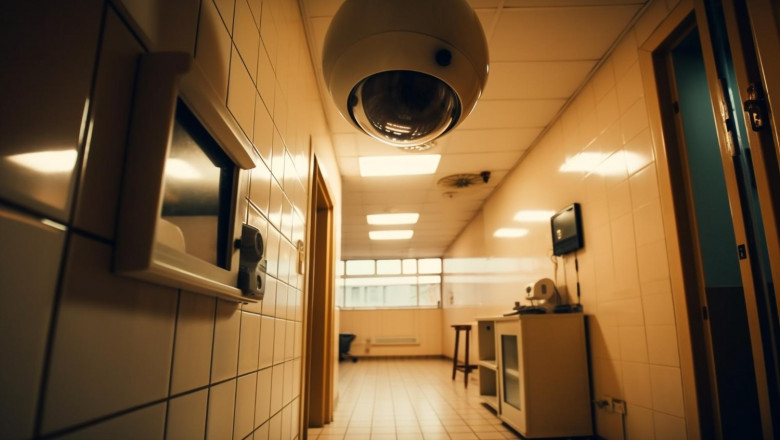views
Have you ever wondered why blurry or unclear images can mean the difference between accurate diagnoses or catching critical details in surveillance? The ability to capture stable, high-quality visuals is more crucial than ever. Optical Image Stabilization OIS cameras offer a groundbreaking solution to these challenges, ensuring consistent clarity in scenarios where precision is paramount.
Understanding Optical Image Stabilization (OIS)
OIS technology minimizes motion blur caused by vibrations, shaking, or rapid movement. Unlike traditional cameras, OIS systems use gyroscopic sensors to adjust the camera lens dynamically, counteracting unwanted motion. This innovation ensures sharp, detailed images even in less-than-ideal conditions, making OIS cameras indispensable for sectors that rely heavily on visual accuracy.
Addressing Healthcare's Imaging Challenges
In healthcare, clear imaging plays a pivotal role in diagnosis, monitoring, and treatment. Yet, many challenges remain:
-
Motion Artifacts in Diagnostic Imaging: Patient movement during imaging procedures often leads to motion artifacts, which can obscure diagnostic details. OIS cameras counteract this by stabilizing the image in real-time, significantly improving the quality of scans and photographs.
-
Low-Light Environments in Surgery: Operating rooms often require dim lighting for specific procedures. OIS technology ensures that surgical cameras deliver crisp, clear visuals, enhancing the precision and safety of operations.
-
Patient Monitoring and Telemedicine: Telemedicine solutions demand reliable imaging for remote diagnosis and consultations. OIS-enabled cameras provide healthcare professionals with stable, high-resolution visuals, even when the device or patient is in motion, improving the quality of care.
Enhancing Surveillance with OIS Cameras
In surveillance applications, the importance of capturing clear and accurate visuals cannot be overstated. Challenges in this field include:
-
Blurry Footage in High-Motion Scenarios: Moving objects or vibrations from surrounding environments can lead to distorted images in traditional cameras. OIS cameras address this by delivering stabilized footage, ensuring that critical details are preserved.
-
Night and Low-Light Surveillance: Conventional cameras struggle to provide clarity in low-light conditions. OIS technology complements advanced sensors to enhance image quality in darkness, making it ideal for monitoring sensitive areas.
-
Dynamic and Outdoor Monitoring: Environmental factors like wind or uneven terrain can introduce motion artifacts. OIS cameras maintain stable visuals, providing consistent monitoring for outdoor security setups, traffic surveillance, or perimeter protection.
Key Benefits of OIS Cameras for Customers
The adoption of OIS cameras addresses critical pain points faced by customers in healthcare and surveillance:
-
Increased Accuracy and Reliability: OIS ensures that imaging devices produce dependable results, reducing the need for repeated scans or surveillance checks due to poor quality.
-
Cost Efficiency: By minimizing errors in imaging and reducing operational inefficiencies, OIS cameras help organizations save time and money.
-
Enhanced Safety and Security: Stable, clear visuals allow healthcare providers to make better-informed decisions, while security professionals can identify threats and incidents more effectively.
Real-World Applications and Success Stories
-
Medical Imaging Breakthroughs: Hospitals using OIS cameras have reported a marked improvement in diagnostic accuracy, especially in pediatrics and geriatrics, where patient cooperation during imaging can be challenging.
-
Airport Surveillance: Security agencies at international airports have integrated OIS-enabled cameras into their monitoring systems to capture stable visuals of fast-moving crowds and vehicles, ensuring comprehensive coverage.
-
Telemedicine Innovations: Remote healthcare services leveraging OIS cameras have enhanced diagnostic confidence, reducing the time required for accurate assessments and improving patient outcomes.
Choosing the Right OIS Camera
For customers considering OIS cameras, understanding their specific needs is key. Here are factors to consider:
-
Resolution and Compatibility: High-resolution cameras with OIS ensure the best results in both static and dynamic environments.
-
Durability and Maintenance: In surveillance, especially outdoors, robust cameras with minimal maintenance needs are crucial.
-
Integration Capabilities: For healthcare, seamless integration with existing diagnostic equipment or telemedicine platforms is essential.
The Future of Imaging with OIS Cameras
As technology advances, OIS cameras are set to become even more sophisticated. Emerging applications include:
-
AI-Powered Stabilization: Integrating OIS with artificial intelligence can enable predictive stabilization, further enhancing performance.
-
Miniaturized Solutions for Wearables: Compact OIS-enabled cameras for wearable healthcare devices or body-worn surveillance systems promise unprecedented mobility and utility.
-
Augmented Reality (AR) Integration: In healthcare and security, AR combined with stabilized imaging can provide professionals with enriched, real-time visuals for better decision-making.
OIS cameras are more than just an upgrade to traditional imaging solutions—they represent a shift toward stability, clarity, and reliability. Whether diagnosing a complex medical condition or safeguarding critical infrastructure, OIS technology ensures that every detail is captured with precision.






















Comments
0 comment